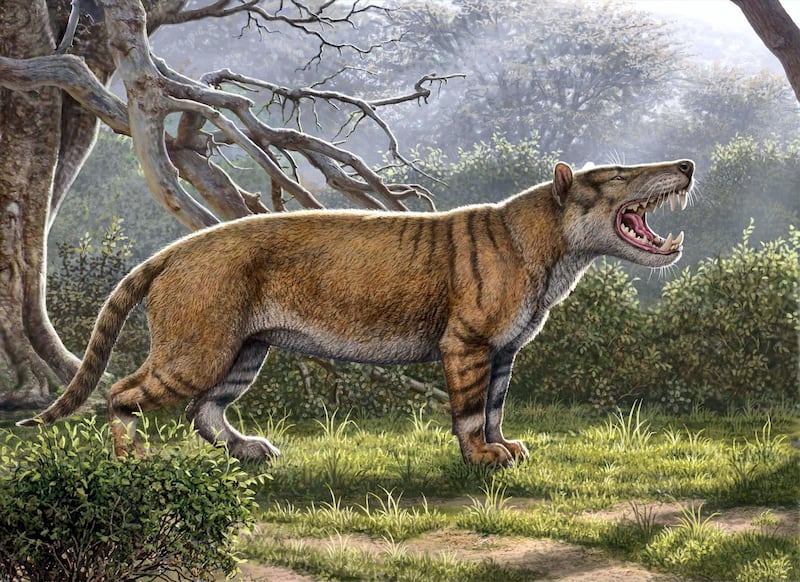A giant lion-like carnivore with enormous fangs that roamed the Kenyan savannah more than 20 million years ago was one of the largest ever meat-eating mammals, researchers said on Thursday.
A team unearthed the lower jaw, teeth and other bones of a new species, Simbakubwa kutokaafrika – Swahili for "big African lion" – after a biologist found the fossils in storage.
Ohio University biologist Nancy Stevens found them in wooden cabinets on the top floor of a Nairobi museum in 2010.
The team calculated it would have weighed up to 1,500 kilograms and could have preyed on the elephant-like creatures that lived there at the time.
"Based on its massive teeth, Simbakubwa was a specialised hyper-carnivore that was significantly larger than the modern lion and possibly larger than a polar bear," said Matthew Borths, from Duke University, who co-led the research with Ohio University.
An artist's impression of the creature shows a giant big cat-like hunter with stripey fur and enormous fangs.
The team behind the study, published in the Journal of Vertebrate Palaeontology, said Simbakubwa lived in what is modern-day Kenya about 23 million years ago, a key period in the evolution of carnivorous mammals.
They said the discovery could shed light on how super-sized predators and prey evolved over millions of years about the end of the Palaeogene epoch, in which mammals grew from tiny rodents into many diverse species.
The research said the fossils were excavated around 1980 in western Kenya and never closely examined.
"Most of the specimens that I study are quite small, so you can imagine my surprise when I opened a drawer that I hadn't examined yet and saw the enormous teeth glinting up at me," Dr Stevens said.
"The specimen had been collected decades before and the team that discovered this fossil was more focused on other parts of the fauna, particularly primates."
Simbakubwa was a member of a group called hyaenodonts that appeared 62 million years ago, 4 million years after the extinction of the dinosaurs paved the way for mammalian dominance, and became extinct 9 million years ago.
Hyaenodonts preceded carnivore groups such as cats, bears, hyenas and wolves, and were closely related to none of them.
"At first glance, it would have looked like a gigantic hyena or long-tailed wolf with a head that was a little too big for its body," said Dr Borths, a palaeontologist at Duke Lemur Centre.
"It was not an animal built for long, efficient runs across open ground. Instead, its foot was flexed.
"Carnivores with this posture tend to be ambush hunters like tigers rather than pursuit hunters like wolves."






